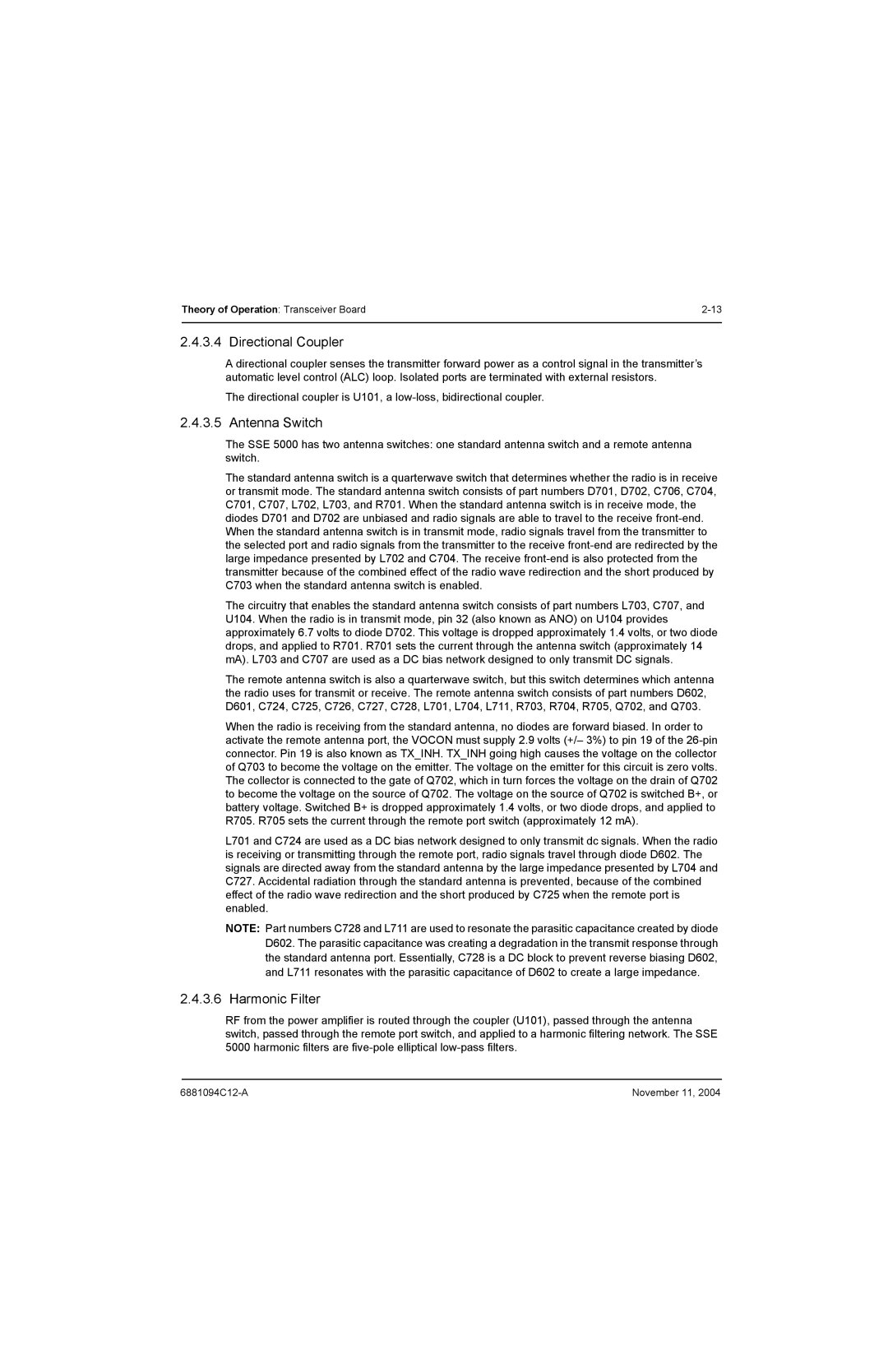Theory of Operation: Transceiver Board | |
|
|
2.4.3.4 Directional Coupler
A directional coupler senses the transmitter forward power as a control signal in the transmitter’s automatic level control (ALC) loop. Isolated ports are terminated with external resistors.
The directional coupler is U101, a
2.4.3.5 Antenna Switch
The SSE 5000 has two antenna switches: one standard antenna switch and a remote antenna switch.
The standard antenna switch is a quarterwave switch that determines whether the radio is in receive or transmit mode. The standard antenna switch consists of part numbers D701, D702, C706, C704, C701, C707, L702, L703, and R701. When the standard antenna switch is in receive mode, the diodes D701 and D702 are unbiased and radio signals are able to travel to the receive
The circuitry that enables the standard antenna switch consists of part numbers L703, C707, and U104. When the radio is in transmit mode, pin 32 (also known as ANO) on U104 provides approximately 6.7 volts to diode D702. This voltage is dropped approximately 1.4 volts, or two diode drops, and applied to R701. R701 sets the current through the antenna switch (approximately 14 mA). L703 and C707 are used as a DC bias network designed to only transmit DC signals.
The remote antenna switch is also a quarterwave switch, but this switch determines which antenna the radio uses for transmit or receive. The remote antenna switch consists of part numbers D602, D601, C724, C725, C726, C727, C728, L701, L704, L711, R703, R704, R705, Q702, and Q703.
When the radio is receiving from the standard antenna, no diodes are forward biased. In order to activate the remote antenna port, the VOCON must supply 2.9 volts (+/– 3%) to pin 19 of the
L701 and C724 are used as a DC bias network designed to only transmit dc signals. When the radio is receiving or transmitting through the remote port, radio signals travel through diode D602. The signals are directed away from the standard antenna by the large impedance presented by L704 and C727. Accidental radiation through the standard antenna is prevented, because of the combined effect of the radio wave redirection and the short produced by C725 when the remote port is enabled.
NOTE: Part numbers C728 and L711 are used to resonate the parasitic capacitance created by diode D602. The parasitic capacitance was creating a degradation in the transmit response through the standard antenna port. Essentially, C728 is a DC block to prevent reverse biasing D602, and L711 resonates with the parasitic capacitance of D602 to create a large impedance.
2.4.3.6 Harmonic Filter
RF from the power amplifier is routed through the coupler (U101), passed through the antenna switch, passed through the remote port switch, and applied to a harmonic filtering network. The SSE 5000 harmonic filters are
November 11, 2004 |
